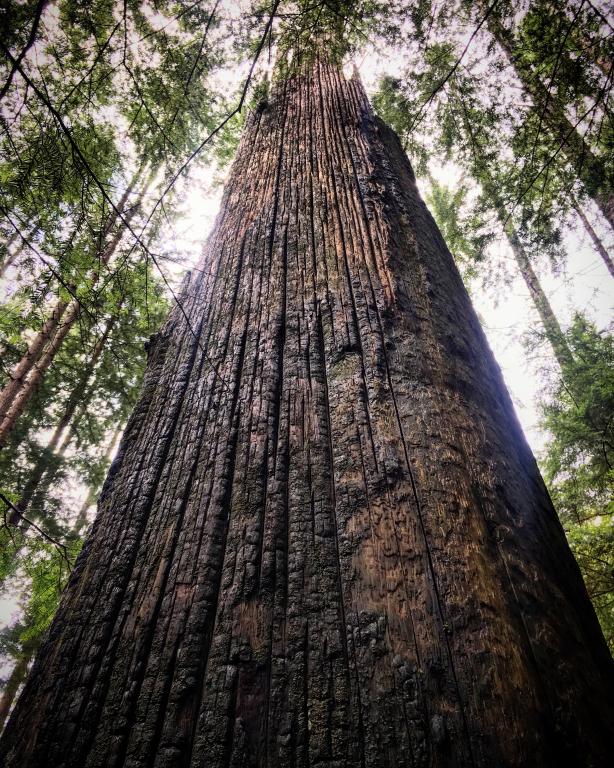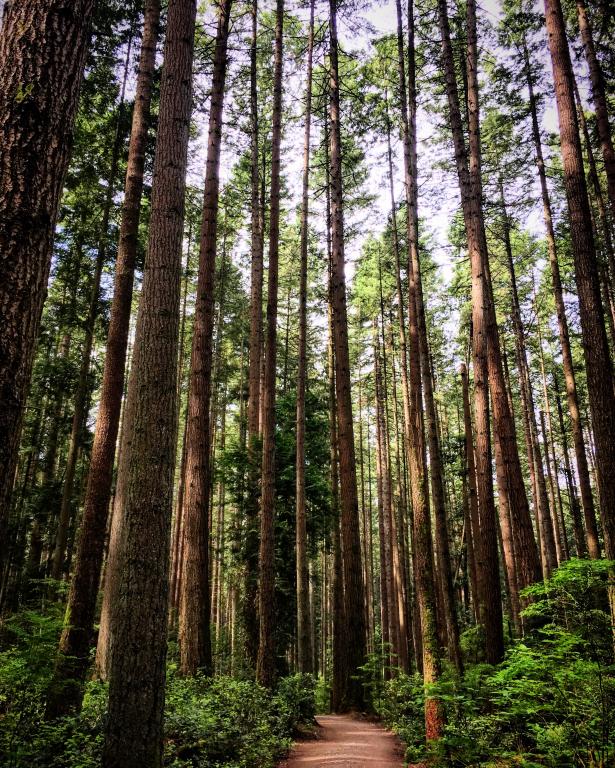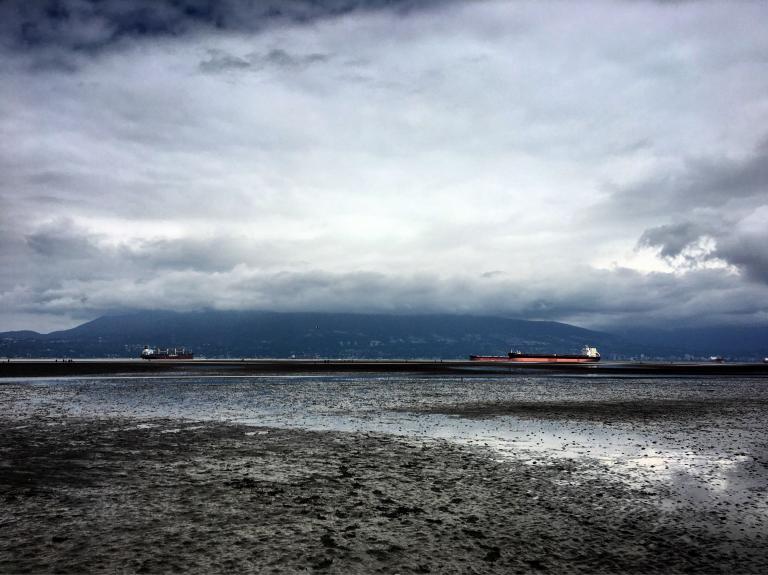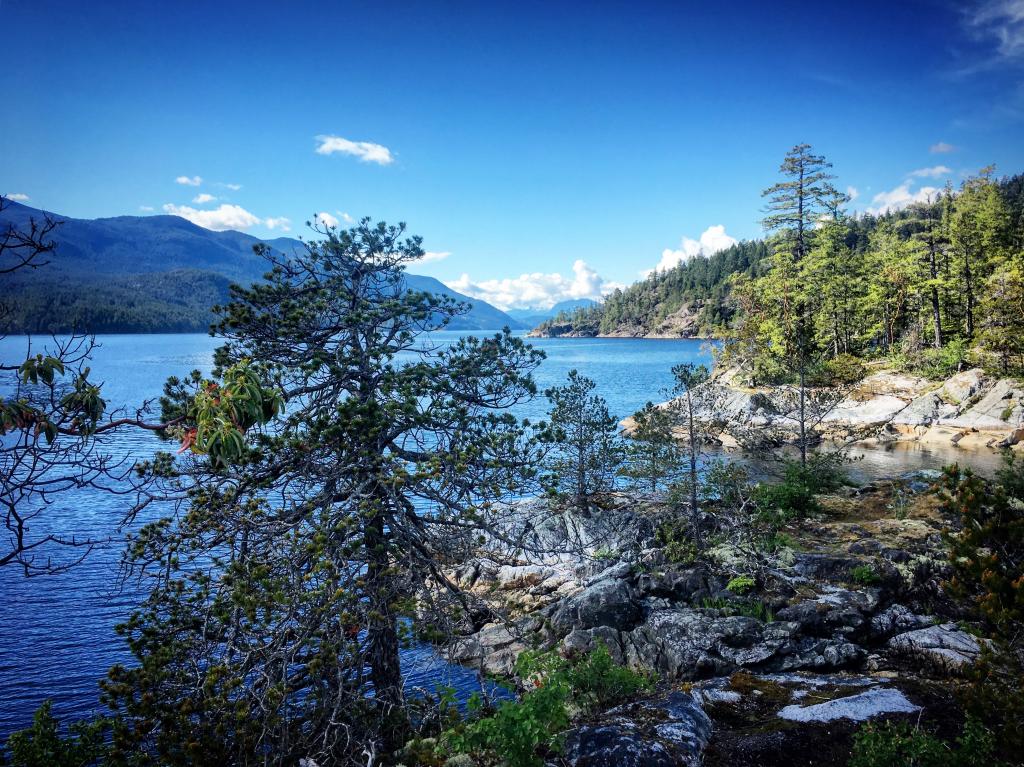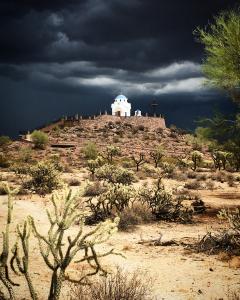 Holding a Candle to the Darkness
Holding a Candle to the Darkness
We have all heard the story. Christianity, with its embrace of Greek metaphysics and its longing for the Kingdom of God, drove a wedge between humanity and the earth, between Creator and creation. A wedge that became a full-fledged dualism under Enlightenment and Protestant iterations that emphasized rationality and nature’s objectivity. What had once been an enchanted cosmos, was now a vast and mostly empty universe.
Yet, despite this ambiguous lineage, Christianity is having something of an ecological renaissance, with theologians, ministries and parishes responding to the call to ‘re-enchant’ the earth, and to lend our weight to reversing course. The ecological crisis is thus necessarily being framed as a moral crisis, and it is generally agreed that a perception of the world as sacred, a perception that was intentionally dismantled under modernism and capitalism, should be reclaimed. The favored model of God as transcendent, distant, removed and patriarchal, is giving way to an experience of God as immanent, sacramental, and feminine.
In my own life, I have boomeranged between these models; from Christianity to a sort of pantheistic nature spirituality and back again over the last several years. However, it was something Pope Francis wrote in his recent encyclical letter Laudato Si, and an experience I recently had in a cherished forest that got me thinking about the value of the transcendent in our approach to the sacred in the age that is increasingly being christened the ‘Anthropocene,’ the age of human domination.
It was partly because of Christianity’s complicity in the ecological crisis, and a host of other reasons, that I had broken with the faith of my upbringing. While I was in graduate school, an inner tumult developed into a full scale crisis of faith. I became depressed and nihilistic. Perhaps, I thought, the world and our existence were meaningless, that there was no value, beauty or purpose outside of our tiny little human minds. It seems part of the human vocation to grapple with questions of meaning and purpose at some level, and I didn’t necessarily expect a resolution. But as I tried to put the pieces of a broken faith back together, I somehow knew that God would still be among them or between them.
Bit by bit, my experience of God began to change, and I became more and more convicted of God’s immanence to the world. In theology and philosophy, immanence, from the Latin for ‘remaining with,’ specifically refers to God’s presence or expression within the created order. For example, in Greek philosophy the Logos was thought to be the logic, or rational pattern behind the stuff of the world. Philosophers such as Baruch Spinoza, and later Gilles Deleuze, postulated a metaphysical monism in which all things were one substance in various states or forms within the vast event of the cosmos. Rather than speak of essences, the cosmos was an unfolding event. Specifically for Spinoza, God and Nature were the same, Pan– all, –theism, God.
However, beginning with the monotheistic writers of second temple Judaism, and later affirmed by Christianity, it was argued that if God is all powerful and the creator, God cannot be encapsulated by the world, contained by it or synonymous with it. God is imagined to be the source and ground of being, within which the universe and being itself comes to be. Theologians such as Dominican Friar Thomas Aquinas postulated that God’s radical transcendence from creation could only be met with analogy, metaphor and iconography.
Growing up, I had been taught about God’s otherness or beyondness, a creator in stark contrast to creature. However, throughout my life, and particularly as I emerged from my short-lived faith crisis, it was encounters with silence, wild and urban nature, and the poor that drew me deeper into an experience of the sacredness of the world, especially through trees and forests, and the underlying divinity that shines through when I remember to look up from my philosophical musings and pay attention long enough to listen, watch, feel, wait. God ceased to exist as a being in a heavenly realm, or as a nebulous force acting on the world from a distance. I began to perceive, in a flitting crow, a soft breeze, a dangle of moss, a dapple of light, a configuration of bodies in a crosswalk, that God was the very fabric from which the world was made and that the sciences took on their own sacred dimension as a tool both for understanding as well as communing with an utterly pantheistic God-world. The world came alive in a way that it had never been before, and began to reclaim something of the magic of an enchanted world that was as Thomas Berry famously wrote, a communion of subjects rather than a collection of objects.
After I completed an eclectic mix of Master’s degrees in forestry and theology, I landed two adjunct teaching jobs back in Salt Lake City, and a seasonal summer position as a forester. I began to read more about pantheism, to meditate, and to consciously explore the city and mountain forests of my Utah home, the home of at least some of my ancestors. I began to regain hope in a this-worldly ecological spirituality that sought the divine in nature, and my purpose in the present moment, and for the most part, it was working. However, it was an experience I had while attending a Midnight Easter Vigil at the Cathedral of the Madeleine in Salt Lake City that unexpectedly set me back onto the Christian path, and an encounter with the value of transcendence in my experience of God.
One of the courses I was teaching in Salt Lake was ‘World Religions’, and I had decided to attend Holy Week services at the Cathedral as a way of experiencing other branches of Christianity. I had heard they had beautiful music, and that the space was breathtaking. I arrived a few minutes late, and quietly pushed through the heavy wooden doors at the front of the towering sandstone gothic edifice. An usher immediately greeted me with a smile, and handed me a candle. I thanked him and found a spot to stand at the back of the nave.
The voluminous space was mostly dark, but the bodies of the reverent devotees were glowing in silhouette with the collective illumination of hundreds of tiny candles. Someone offered me a light, and I looked around in awe as the Gregorian chant of the choir filled the frescoed forest of stone columns and vaulted canopy arches. As I took in the beauty, I thought to myself, that it sort of felt like a funeral. Just as quickly it seemed, I realized, it was a funeral. On Good Friday, Jesus had been crucified and laid in the tomb, and throughout Holy Saturday, Christians waited in suspended, silent animation for the moment when life would once again triumph over death. As the readings proceeded, spanning the width of salvation history, we came closer to the moment of Christ’s resurrection, until finally, the Lenten poverty was broken by a string of cacophonous ALLELUIAS! Suddenly the lights of the cathedral came on in a sudden flash. Christ was risen, and something beyond me stirred my soul.
Going to Mass for Easter will sound familiar, even mundane to many, but for me on that evening, having grown up in a different tradition, for the first time, a familiar story took on a deeply cosmic dimension, and that I was participating in it with others. That my life was somehow embedded within that story, and that I was wedded in one way or another to its outcome. We were ritually celebrating, not just sermonizing the hope that suffering and pain are not meaningless, that death is not the end; that creation, birth, life and death are the archetypal structures that pervade the universe. That somehow, we will come out the other side. Standing at the back of the cathedral with a tiny candle, the hope and power of the Christian story hit me all at once like an unexpected wave. The world really was filled with mystery, beauty and holiness. While it would seem that the universe is headed for a cold extinction, Christianity insists on celebrating life through death. Our gaze is fixed with unflinching hope on life, but squarely in the middle of that gaze is a tortured corpse hanging on a tree. Christianity’s hope is not a naïve or vapid one, but one rooted in the realities of pain and suffering both personal and evolutionary which are not threats, but the very seeds of continued hope and life. That inner landscape I had been trying to access and cultivate began to germinate with tiny fragile seedlings that I continue to clumsily nurture as I write these words. God’s presence in the world, which I had just learned to experience as a pantheist, began to once again trickle back into the sacraments especially the Eucharist, icons, choral music and sacred space.
In a Dark Wood
It was getting harder for me to discern the contours of the last few meters of a familiar forest trail. I was on my way home to Vancouver, British Columbia from Lacey, Washington after a short retreat with the Benedictine monks of Saint Martin’s Abbey. I stopped in Bellingham for food, and a quick hike through a favorite grove of trees to stretch my legs before I pressed northward. In my haste, I had slightly miscalculated the amount of remaining daylight, and how long it would take me to walk the 4.5 km trail before the closed canopy forest became thick with darkness.
I was already in a dark mood, and the cold, dead vegetation of muddled greens and plentiful browns, chilled me to the bone as I stumbled over the squish of decomposing leaves speckled along the path. The deciduous trees were naked, and the conifer branches loafed in their winter dormancy. As I reached a critical fork in the trail, I started in the wrong direction, and had to double back to find the trail again. As my feet finally touched down on the familiar gravel of the parking lot, I felt a small pang of relief and embarrassment for almost getting lost in such a familiar place.
Yet, despite my love for being in the forest, as I got into my truck, I finally acknowledged a sense of foreboding, sadness and longing that I had felt as I walked in the waning light of that winter day. As someone who loved to preach about God’s presence in the world, it was actually hard for me to admit that I didn’t feel anything but awe, wonder, amazement and gratitude in the forest. The place is as familiar and sacred to me as any church, or my prayer space, and I have spent many hours on the trail, staring with slacked jaw up into the canopy; or on hands and knees smiling into the stoic face of a rough skinned newt. But that night, I could not shake a feeling of deep unease.
As I sat tending to the wound in my heart, a wound with no particular source, I remembered something Pope Francis wrote in his 2015 Encyclical Letter Laudato Si. In an authoritative Encyclical Letter, Pope Francis had officially acknowledged the seriousness of climate change, the importance of caring for the earth not just as a gift to humans from God, but as a web of living creatures endowed with intrinsic value independent of their usefulness or beauty to human beings. Yet, he also affirms the traditional Christian understanding of God as not being coterminous with the world (I.e. not pantheistic) and Pope Francis warns against what he calls pantheism’s “stifling immanence.” When I first read this statement, the part of me that is still a pantheist took exception. Even as a new-ish revert to Christianity, God’s immanence in the world is crucial to my faith, and the foundation upon which I have built the bridge between my faith and my understanding of ecology. But as I turned the keys and began to back out of the small roadside parking lot, the meaning of this simple phrase began to come into focus.
Toward a Spiritual Ecology of the Transcendent
As is well known, in response to the excesses of early industrialism nurtured by the transcendent model of God, the Romantics and poets and later the Transcendentalists of the 19th century, took issue with the plunder of the natural world for profit, and the notion that God was a distant fatherly being. Writers such as Ralph Waldo Emerson argued that nature pointed to spiritual truths, and conservationists began to find God in Nature, a domain of reality held as opposition to Culture. Wilderness took on a new vibrancy and holiness and God became wholly immanent to creation. Preservationism then, became about protecting a sacred Nature from a ravenous Culture. For example, early American conservationist John Muir, in a letter to a friend written in 1868 proclaimed that Yosemite Valley was “by far the grandest of all the special temples of Nature I was ever permitted to enter.” And for Transcendentalist Henry David Thoreau and many others of his generation, the wild places became the sacred sanctuaries held in opposition to the establishment Protestant Christianity with its emphasis on scripture, doctrine and getting to Heaven. Thoreau wrote in his essay ‘Walking’: “I enter a swamp as a sacred place –a sanctum sanctorum.”
Unfortunately, this dualistic approach to the natural world has led to an impoverished ethic with respect to our relationship to those areas that fall outside of the more charismatic protected areas. As William Cronon controversially wrote in his 1996 essay ‘The Trouble with Wilderness’, the so-called wilderness ethic that the preservationist movement has promoted not only failed to prevent our most serious ecological crises, it has tended to de-valued places closer to home that do not fit a narrow aesthetic of wilderness. Certainly there is value in places of transcendent beauty; but there is also an immanent sacredness to places more familiar, rich with memory and closer to home.
My experience in the Cathedral had been of God’s unexpected presence; and my experience in a grove revered as sacred had been one of God’s unexpected absence. It would seem that God is something of a Trickster; not always present to the world in the ways we expect. We cannot just go to church, pray, meditate or go even to our favorite spot in the forest and expect a holy moment to be waiting. As theologian Belden Lane reminds us in his book Landscapes of the Sacred, the sacred (God) often choses before is chosen. God’s immanence to the world may be real, but it is not a vending machine to which we can keep coming back for the same encounter, experience or fix.
An encounter with the sacred (God), can, paradoxically be experienced as absence. Religious life is not a kind of spiritual aerobics that makes us feel warm and fuzzy all the time, and the natural world is a place of both beauty and pain. The spiritual life is also about facing our failures, suffering and that of the world. To frame immanence as ‘stifling’ as Pope Francis does in Laudato Si, is not to argue that God is absent from the world, but, to say that unless we are sometimes faced with the feeling of God’s absence, we will never move, grow or seek change. This is what Saint Augustine meant when he wrote that “our hearts are restless Lord, until they rest in you.” God’s transcendence, or beyondness can teach us that we are not self-sufficient on our own. If everything is God, rather than everything being in God (pan-en-theism), the mystery of the other has nothing whatsoever to teach us about the Other that is God.
There is of course many more theological reasons to balance God’s immanence and transcendence. However, for those of us invested in the project of reenchanting the world as a moral response to the ecological crisis, the way we frame the sacred in relation to the world has consequences within the increasingly fragmented environmentalist landscape that we have inherited from the preservationists and conservationists which are being increasingly critiqued as ineffective or overly romantic.
We seem to be on the verge of something new. Though much contested, some have proposed that we are entering the ‘Anthropocene’, a term coined by climate chemist Paul Crutzen in 2003 to describe the increasingly pervasive impact human beings have on the planet. Currently being debated by geologists as to whether or not it makes up an actual new geologic epoch, there is no agreement about when it might have started. Do we date it to the advent of intensive farming? The peak of the so-called First Axial Age roughly 2,000 years ago? The dawn of the industrial revolution in the 1800s? Or, with the first nuclear explosion in the mid-20th century? What is clear, is that human beings are the culprit for much of the ecological changes being tracked by scientists across the board. What is not clear is how to respond.
What I have noticed in these ongoing debates about how to proceed, is that models of the immanent and transcendent aspects of the sacred have not been properly addressed by both sides of a hotly contested debate within the environmental movement between so-called Ecomodernists on the one hand, and Ecocentrists on the other. It would seem that a way forward will require a better balance between notions of immanence and transcendence, not necessarily of God per se but of the implications of to what extent we acknowledge the sacredness and transcendent value of the world in our strategies for lessening the destructiveness of the human presence on the planet.
With the recent publication of the Ecomodernist Manifesto, the authors align themselves with a growing number of environmentalists who think traditional conservation strategies have failed. These “new” environmentalists are confident that the Anthropocene will be a step forward not backward:
“As scholars, scientists, campaigners, and citizens, we write with the conviction that knowledge and technology, applied with wisdom, might allow for a good, or even great, Anthropocene. A good Anthropocene demands that humans use their growing social, economic, and technological powers to make life better for people, stabilize the climate, and protect the natural world.”
Human genius will save us, and we can expect, with the proper adjustments to institutions, economies and technologies, a Tony the Tiger-styled “grrrrreat!” Anthropocene.
Ecopragmatists, New Conservationists or Ecomodernists as they variously self-identify, have more confidence in human genius than human heart, and for many of them, solving the ecological crisis is not a moral imperative but a practical necessity. Thus for many, the language of the sacred is a human construct at best, and a romantic diversion at worst. For the writers of the Ecomodernist Manifest, environmentalism’s sacred cow, Nature has got to go, and we need to embrace technology, State-centered decision making, an emphasis on Ecosystem Services, and a human-values centered approach to ecological sustainability. This is because Ecomodernists, like classical Modernists, are confident in human rationality and genius as an effective tool for managing the planet as a whole wherein both social justice, biodiversity and ecological integrity can be achieved.
This approach has often dodged the possibility that anything is inherently sacred, or that biodiversity and ecosystem have transcendent value outside of human valuation. It is what we make it, what we value, what we desire. If we want wilderness we need to justify it through human values and priorities. As futurist Yuval Harari writes in Homo Deus, we are now gods, on the brink of immortality, and capable as ever to manage the planet for the good of all life (as seen through human eyes). Traditional conservationism, founded on a theology of beauty and the transcendent is deluded and impractical in its romantic attempts at preserving, as Ecomodernist Peter Kareiva suggested, “islands of the Holocene” in the midst of a rapidly evolving and advancing human race.
Opposed to Ecomodernism, and continuing the legacy of the great Romantics, are a growing number of environmentalists who claim to be either Ecocentrists, or Spiritual Ecologists. Rooted in the intuitions of the Deep Ecology movement of the 1970s and 80s, these folks insist that the totality of the earth-system, biotic and abiotic, carry intrinsic worth beyond human usefulness (even spiritual usefulness), and are therefore of primary ethical concern and imperative. Advocates of Ecocentrism, the idea that individuals should be subservient to the greater ecological whole, suggest that we need a new religious sensibility that will enshrine this ethic in its worldview. They insist that the earth has value apart from human perceptions. That biodiversity and intact ecosystem regardless of their value to human economies or aesthetics should be preserved as close to intact as possible, and that the only viable option for humanity is to radically downsize our population and footprint.
Ecocentrists often join forces with other strands of environmentalists, poets, nature writers and ecotheologians who have been calling for a “reenchantment” of the world; a world that is wholly sacred; a sacredness that is immanent to the world, and does not appeal to a distant Creator. Rather, its sacredness comes from its very existence, complexity and fecundity. In his edited volume Spiritual Ecology, the editor, Sufi teacher Llewellyn Vaughan-Lee, writes that “The world is not a problem to be solved; it is a living being to which we belong.” Lee’s book features voices from the world’s major religious and spiritual traditions, each singing in a different octave the song that the earth is sacred and that we must return to a meaningful commitment to this reality if we are going to overcome the daunting troubles we now face as a species. This intuition, that our bodies, and our very existence is part and parcel to the wider world, but not another world, is a core intuition of a pantheistic theology where the world’s sacredness is wholly immanent. In describing his connection to an island off Haida Gwaii, anthropologist Richard Nelson captures his own embeddedness to the earth and her processes:
“There is nothing in me that is not of earth, no split instant of separateness, no particle that disunites me from the surroundings. I am no less than the earth itself. The rivers run through my veins, the winds blow in and out with my breath, the soil makes my flesh, the sun’s heat smolders inside me. A sickness or injury that befalls the earth befalls me. A fouled molecule that runs through the earth runs through me. Where the earth is cleansed and nourished, its purity infuses me. The life of the earth is my life. My eyes are the earth gazing at itself…I am the island and the island is me.”
Human beings are the earth gazing back at itself, and to find ourselves embedded in her webs of life is to come face to face with the sacred. We must therefore protect life, protect ecosystems, and protect the earth from the savage assault of Homo industrialis by developing an entirely new approach to our relationship with the earth. We need a new approach. But the approach advocated by Ecocentrists seems to be simply an inversion of traditional binaries: Rather than the sacred space of church, we want the sacred space of the forest. Rather than a Transcendent God, a wholly Immanent Divine. Rather than a world filled with objects we wish to return to a world of interconnected subjects.
We seem to be endlessly caught pinging between opposites put in place by the Enlightenment and the Protestant reformation. It seems we are pressured to choose between either nature as god, or the human being as divine. And while I agree that we need a return to an immanent framing of the sacred, and a stronger sense of reverence for the world, we should not lose hold of the beautiful and productive aspects of the transcendent. Rather than swinging between the sentimentalism of Spiritual Ecology and the cold calculated pragmatism of the Ecomodernists, might there be a third way?
While journalist Emma Marris is often accused of being an Ecomodernist, in her book Rambunctious Garden, while she does take aim at traditional conservation strategies such as wilderness areas and invasive species, her approach in the final chapter of the book seems to strike a balance between values as being both transcendent and immanent, and the possibility that sacredness is as well. For example, while critical of ironclad definitions of nature and wilderness, she is not opposed to recognizing and managing landscapes for their sacred value to human beings, or the intrinsic value of ecosystems and species. However, what she insists is that it is human beings who will inevitably make decisions with respect to these values. If we are too focused on enhancing ecosystem services, which many Ecomodernists are, we may lose sight of the importance of protecting the intrinsic value of endangered species. If we are so focused on saving a species from extinction by preserving it in labs (such as is the case with some frog species in Central America being wiped out by an invasive fungus), then we may forget to protect the ecosystem it evolved to thrive in. If we affirm the rights of every species to thrive and flourish, we may tie our hands when a particularly aggressive species threatens an endangered species such as is the case with certain invasive trees, plants or mammals on island ecosystems. Marris, though she does not say so in these terms, seems to be suggesting a more balanced approach to the transcendence and immanence of the sacred with respect to the life of the world. There are values beyond human values; but we shouldn’t be afraid to participate in the world for fear of violating the sacred precincts of the domain of Nature we have shored up to alleviate our guilt for the desecrated places under the plow of human Culture.
Of course, these debates are complex and the stakes are high. In advocating a middle ground, one that balances transcendence and immanence in relation to value and the sacred, I am not claiming that the way forward is simple, straightforward or free of pain. But from where I stand, along with the movement to make the world sacred once more, we should not discard the sense of absence, longing, and transcendence at the heart of the world from which we emerged and to which we are wedded. As conservationist Aldo Leopold once wrote, “To be a good tinkerer you need to keep all the pieces.” As we enter the Anthropocene, we will need the language of the sacred and the profane, the language of presence and absence, the language of death and life. As we march into an unknown future, a future that often looks bleak and without hope, it is essential to celebrate big victories, to be present to small beauties, but also to mourn the losses great and small. Even in the midst of darkness, despair, of loneliness, pain and loss, life, the earth, and God have a way of turning shit into compost.


